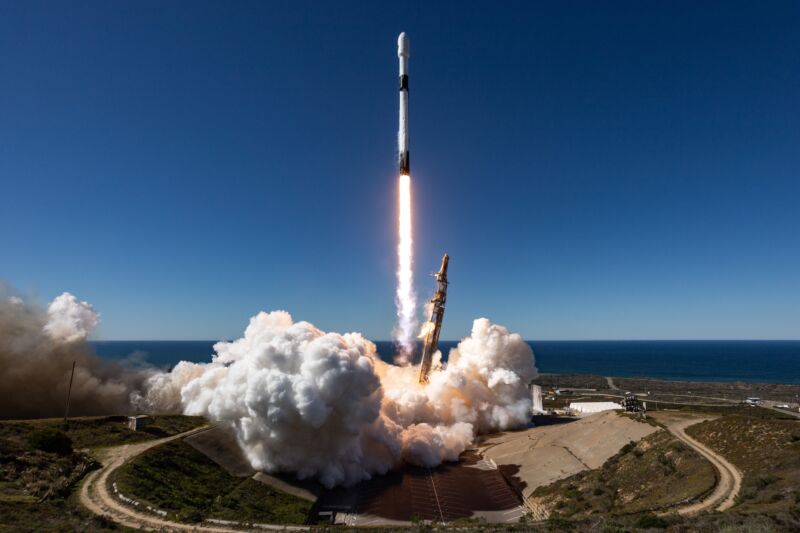
A Russian Soyuz rocket launched from the Plesetsk Cosmodrome on Monday around midnight local time. The military mission's payload was classified but has been designated Kosmos 2558 for tracking purposes.
The Russian satellite has since been placed in a nearly circular, 435 km by 452 km orbit, with an inclination of 97.25 degrees. This is notable, satellite trackers say, because it will allow the Kosmos 2558 satellite to come very close to a recently launched US spy satellite, which was designated NROL-87.
This US national security payload was designed and built for the National Reconnaissance Agency and launched on February 2 into orbit by a Falcon 9 rocket from Vandenberg Space Force Base in California.
As is usual for such missions, little information has been provided about the American spy satellite beyond a bland statement from the US spy agency: "NROL-87 will strengthen NRO’s ability to provide a wide-range of timely intelligence information to national decision-makers, warfighters, and intelligence analysts to protect the Nation’s vital interests and support humanitarian efforts worldwide."
However, a comment from Chris Scolese, the National Reconnaissance Office's director, suggested the satellite carried novel technology on board. "The success of NROL-87 was the result of multiple partnerships and the innovation of our people," Scolese said. "Technology is ever-changing. The relationships we build enable us to recognize solutions faster to ensure we field the latest capabilities."
Russia seems to be interested in knowing more. According to Marco Langbroek, an expert in satellite tracking, the middle of the Soyuz launch window was very nearly the moment during which the orbital plane of the classified US satellite passed over Plesetsk. The Russian satellite, therefore, launched into the same orbital plane. This sets up a close encounter between the two satellites on Thursday, when they will pass within just 75 km of one another.
While this may sound like a provocative action, there is nothing illegal about it. In fact, as the Secure World Foundation's Brian Weeden points out, as long as Kosmos 2558 does not directly interfere with NROL-87, such an action does not violate any international laws or norms.
The launch serves as a reminder that just as nations use space to spy on one another on Earth, they also use Earth to spy on space activities. And increasingly, we're seeing space-to-space observational activities.
Everyone is watching everyone everywhere.
reader comments
191